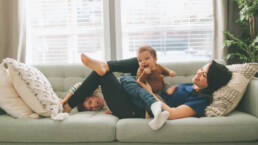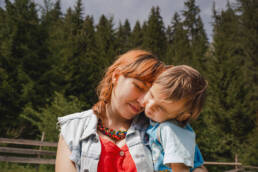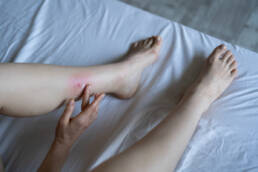Bed bugs, scientifically known as Cimex lectularius, are small parasitic insects that belong to the family Cimicidae. They are flat, oval-shaped, and typically reddish-brown in color. Adult bed bugs are about the size of an apple seed, measuring around 4-5 millimeters in length. These nocturnal pests feed exclusively on the blood of warm-blooded animals, including humans.
Life Cycle of Bed Bugs
Bed bugs go through a series of stages in their life cycle. It includes eggs, nymphs, and adults. Female bed bugs lay hundreds of tiny, white eggs in cracks and crevices near their hiding places. These eggs hatch into nymphs, which resemble smaller, translucent versions of adult bed bugs. Nymphs go through several molts before reaching adulthood. The entire life cycle can take several weeks to months, depending on environmental conditions and access to a blood meal.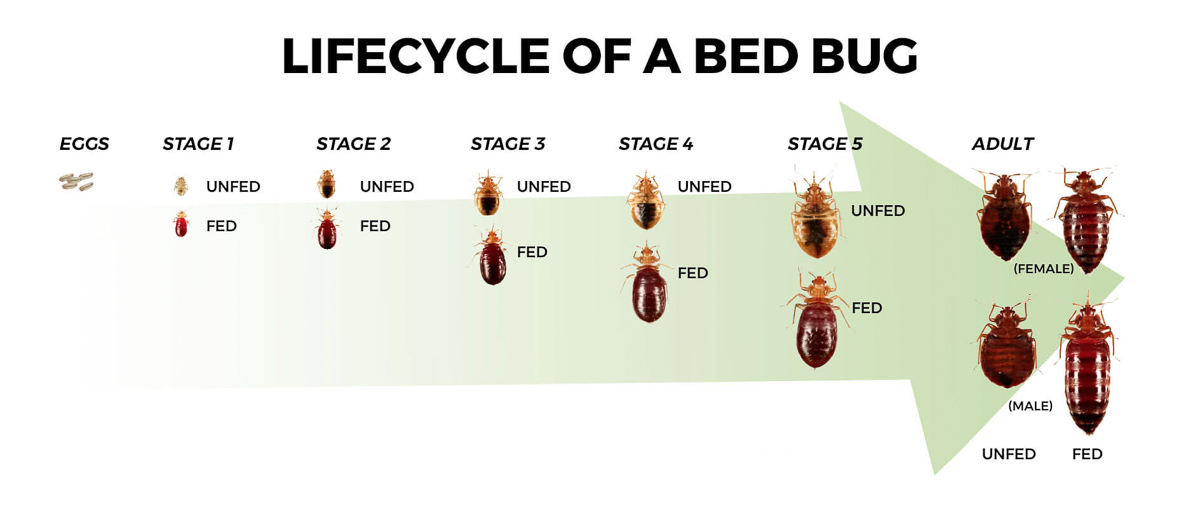
Behavior and Habits
During the day, bed bugs prefer to remain hidden in cracks and crevices, often close to their hosts’ resting places. Common hiding spots include mattress seams, headboards, baseboards, and upholstered furniture. Bed bugs are primarily active at night when their hosts are asleep, and they feed by piercing the skin with their elongated mouthparts, withdrawing blood, and retreating to their hiding places.
How Did I Get Bed Bugs?
Sources of Infestation – Bed bugs can be introduced into your home through various sources. Common sources include:
- Travel: Bringing bed bugs home from hotels or accommodations with previous infestations.
- Used Furniture: Infestations can be present in used furniture, particularly in items like mattresses, sofas, and chairs.
- Used Clothes: Secondhand clothing, especially if stored in infested areas, can carry bed bugs.
- House Guests: Visitors unknowingly carrying bed bugs with them.
- Neighbors: Bed bugs can migrate between units in multi-unit buildings through walls or shared spaces.
Signs of Bed Bug Infestation
Detecting a bed bug infestation early is crucial for effective control. Signs to look out for include:
- Bite Marks: Small, itchy, red welts on the skin, often in clusters or lines.
- Bloodstains: Tiny bloodstains on sheets and pillowcases from crushed bed bugs.
- Dark, Rusty Spots: Bed bug excrement, often found on bedding or nearby surfaces.
- Musty Odor: A sweet, musty odor emitted by large infestations.
Bed Bug Prevention Tips
To prevent bed bug infestations, consider the following tips:
- Regularly inspect your living space for signs of bed bugs.
- Be cautious when acquiring used furniture or clothing.
- Educate yourself on the signs of bed bugs to detect them early.
- When traveling, inspect hotel rooms before settling in.
- Communicate openly with house guests about bed bug concerns.
Dealing with Used Furniture
Used furniture can carry hidden bed bug infestations, posing a risk if not properly inspected and treated. Bed bugs can hide in seams, cracks, and crevices of items like mattresses, couches, and chairs. When obtaining used furniture:
- Inspect items thoroughly, paying attention to seams and joints.
- Consider treating used furniture with heat or insecticides before bringing it into your home.
- Isolate newly acquired furniture from your living space until you’re sure it’s bed bug-free.
Used Clothes and Bed Bugs
Bed bugs can occasionally infest clothing, particularly if it’s been in contact with infested bedding or upholstered furniture. However, they are more likely to infest items in close proximity to sleeping areas. To prevent bed bugs from infesting your clothing:
- Wash and dry used clothes on high heat, as bed bugs are sensitive to extreme temperatures.
Store clothing in sealed bags or containers when not in use.
Be cautious when bringing used clothing into your home, especially if it has been stored in infested areas.
Bed Bugs and Traveling
When traveling, be aware of the risk of encountering bed bugs in hotel rooms. Bed bugs can hide in mattresses, headboards, and furniture. To minimize the risk of bringing bed bugs home from your travels:
- Inspect hotel rooms for signs of bed bugs before unpacking.
- Use luggage racks instead of placing bags on the floor or bed.
- Upon returning home, wash and dry your travel clothing on high heat.
House Guests and Bed Bugs
House guests can unknowingly introduce bed bugs if they come from an infested environment. Be mindful of this when hosting visitors.
- Openly communicate with house guests about bed bug concerns.
- Encourage them to inspect their belongings and luggage for signs of bed bugs before arriving.
Neighbors in Multi-Unit Buildings
In multi-unit buildings, bed bugs can spread through shared spaces such as walls, vents, or common laundry areas. A neighboring infestation can become your problem if not addressed promptly.
- Work with neighbors to address bed bug issues collectively.
- Inform the building management and consider professional pest control to prevent further infestations.
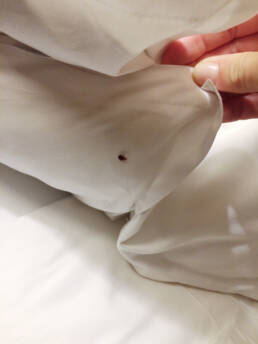
Ready for an expert opinion? Get in touch today!
We kill bed bugs in the infested space and surrounding walls by heating the space to a temperature of 135°F, killing all bed bugs and their eggs. If you have a bed bug problem, we have a solution. Exterminate bed bugs today with Hot Bugz. It’s safe and you get to keep your stuff. Call us today for a free consultation.
Like this article? Spread the word!
Related Posts
April 23, 2024
Preventing Bed Bugs in Denver Area Homes with Hot Bugz Heat Exterminator
Learn how to prevent bed bugs in your Denver area home with Hot Bugz Heat Exterminator.…
February 15, 2024
Unveiling the Emerging Threat of Bedbugs
Discover the new reality of bedbugs with Hot Bugz in the Denver metro area. Uncover the…
October 30, 2023
Bed Bugs Resistance To Insecticides
Unravel the mystery of bed bugs' growing resistance to insecticides. Explore the latest…


